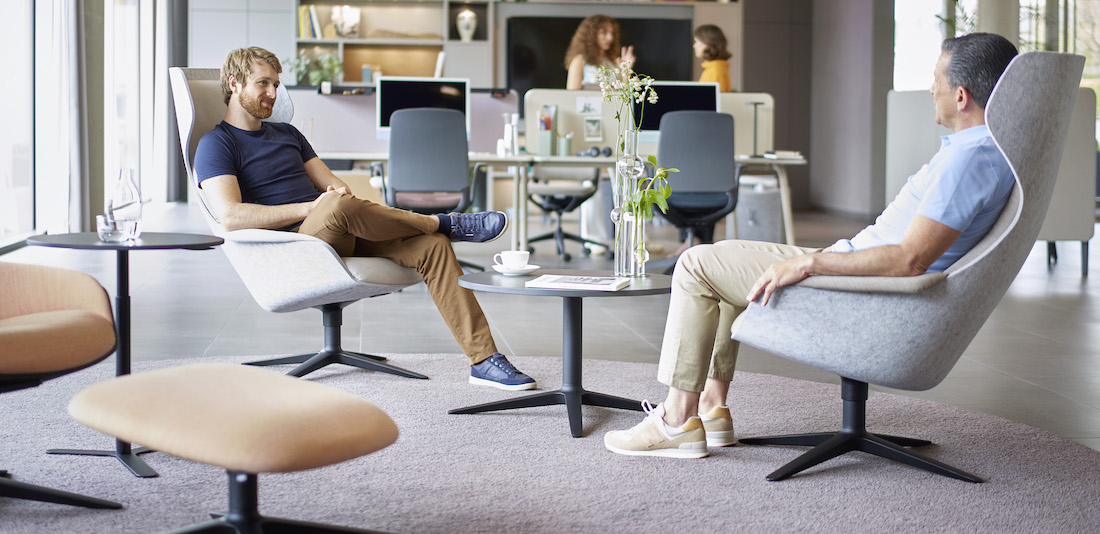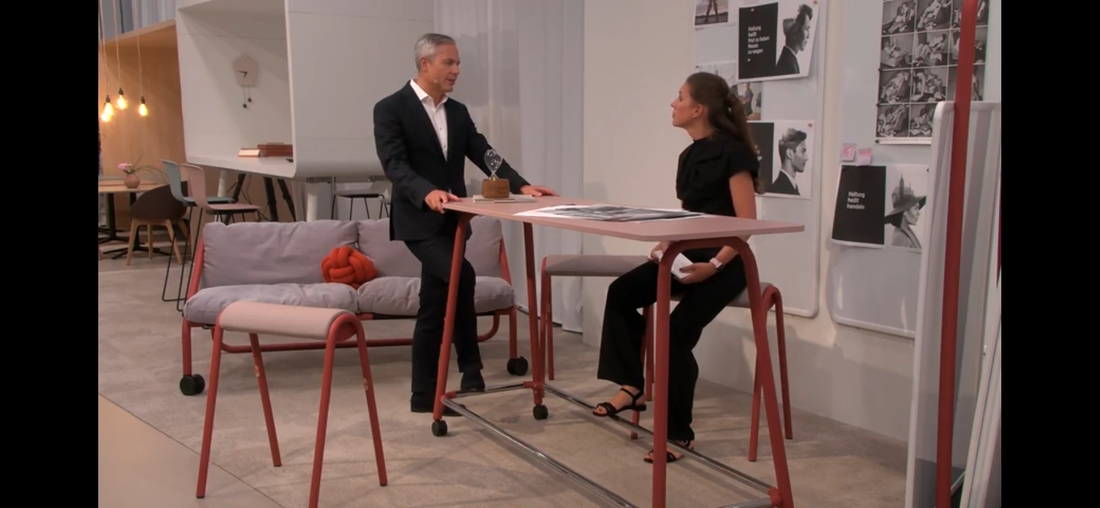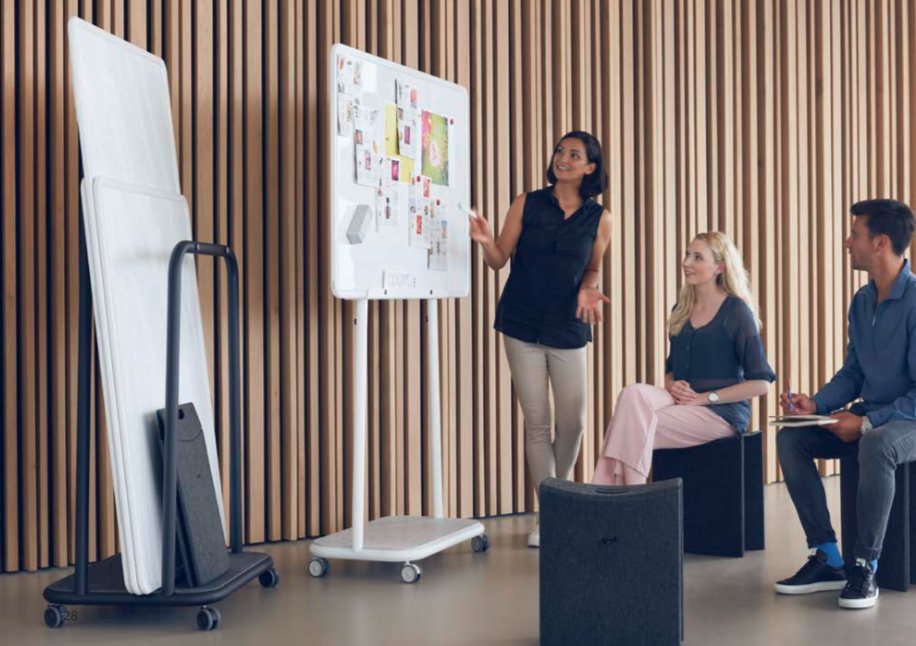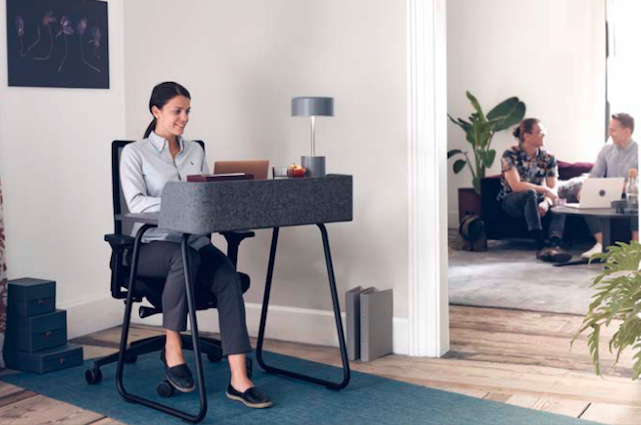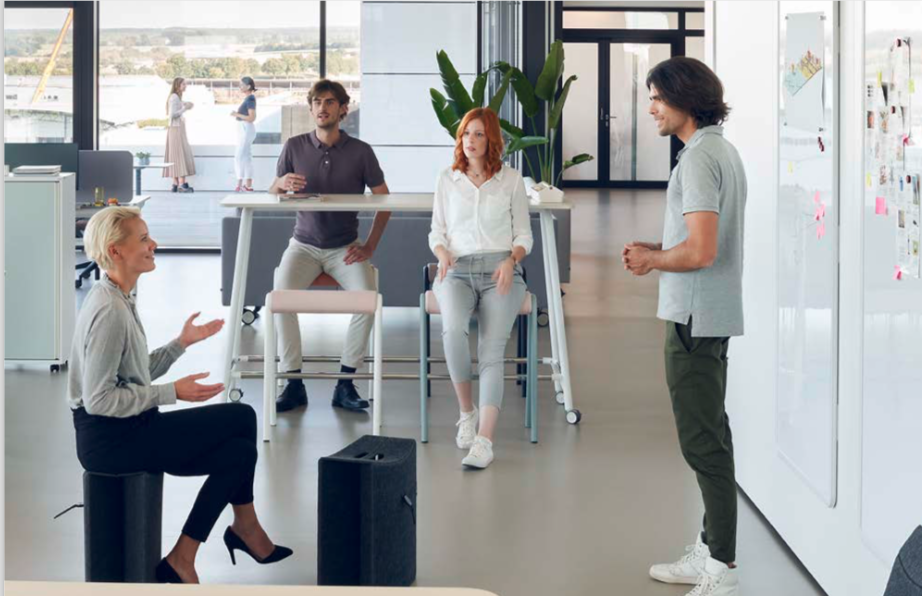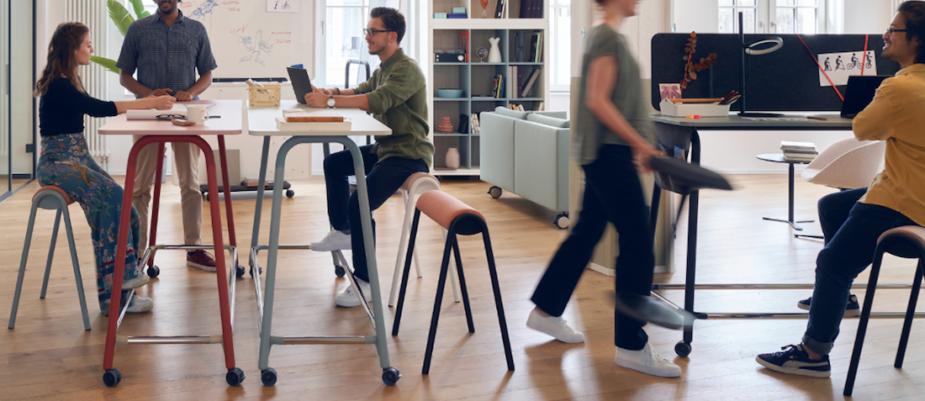
During the four years that separate Orgatec 2022 from the previous edition, the global experience of the pandemic and lockdown has questioned many certainties and has certainly transformed the way of understanding the workplace.
In fact, in the last two years the demands on the environments in which (also) we work have changed at an unprecedented pace.
The upcoming Orgatec -Cologne from 25 to 29 October 2022- will therefore have the task of reflecting these changes, addressing new needs and problems and offering answers.
To address the complexity of the hybrid working world, Orgatec carried out a research with the Fraunhofer Institute for Building Physics IBP.
Some sneak peeks are provided by Maria Zaglauer, Psychologist and Chief Scientist of the Acoustics Department at Fraunhofer IBP, while the full presentation of the study will be held at the fair during a symposium at Offenbach Hall on October 26, 2022, from 10am to 5pm.
Free seminar, registration required. To participate click here.
The present of the workplace offers a scenario in search of a new balance, after the transition that the pandemic has made more like between office, home office and “third places”. In addition, with the spread of concepts of activity based office and other non-territorial ways of working, greater dynamism and flexibility are an indispensable prerogative even within the office. So how appropriate Changing Places! as the title of the research.
Changes that for the purposes of the study were divided into three areas: change of places, change of concepts and types of change.
The study starts from the consideration that in a hybrid working world, design and the emotional impact of work environments take on a particular meaning and from the comparison of different spaces in terms of physical and design environmental conditions. Analyzing how often and why people move from one space to another in their daily work and identifying areas where workplaces could complement each other functionally and psychologically.
A central theme to be addressed in the design of the space concerns the dichotomies of territoriality versus privacy, or concentration versus collaboration. In general it is assumed that the home office will be used for self-employment and concentration, while the office will be used more for collaborative work. However, it is unthinkable to apply this rule in a rigid way in the design of an office: the working week is not clearly divided into independent and collaborative days.Each day involves a range of activities.
This assumption raises questions and new needs of users in the use of spaces.
“The home office is a setting where I regularly and frequently use my own private space for work – a space I may well have designed to suit my individual needs over the last two years. Do I then need my own personal space in the office as well, or am I more likely to embrace non-territorial concepts such as desk sharing these days?
Considerations such as these play a major role in office space design and user acceptance. In this context, it’s also interesting to ask what image the different workplaces have and whether work is valued irrespective of where it takes place. Is on-site working still regarded as more engaged or somehow “more valuable” than mobile working or is the “mobile mindset” now fully embedded in our working culture?” Maria Zaglauer explains.
Mobile working will remain a constant, which will make desk sharing and the mutual use of workspaces even more important. Alongside the home office, “third places” are assuming an increasingly significant role.
Other priority topics are air purification (users today have a greater need for safety in this respect), acoustic comfort and the effects of light in the context of work and relaxation in the office.
Faced with the risk of an energy crisis caused by the Russia / Ukraine conflict, it becomes essential to make offices more sustainable and more energy efficient and it is proven that even remote work can contribute to significant CO2 savings.
The considerations on issues related to the organization of the physical space of the workplace cannot, however, be separated from cultural change.
Is on-site working still regarded as more engaged or somehow “more valuable” than mobile working or is the “mobile mindset” now fully embedded in our working culture?
The corporate climate generally plays a major role in stimulating people to work with colleagues in office.
Waiting to hear the insights from the various specialists who will give their speeches at the symposium, Maria Zaglauer summarizes what factors make a good working environment in her opinion.
“In our view, a good work environment should first and foremost fulfil users’ fundamental needs for physical and mental wellbeing, freedom from distraction, privacy, creative inspiration and interaction. This can’t be taken for granted even in many modern work environments.
Often distracting conversations in the background have an impact on employees’ performance and encroach on their privacy. In the lab, we’ve demonstrated that this results in an immediate drop of up to 16 per cent in performance on cognitive tasks. Such inadequate environmental conditions lead to employee dissatisfaction.
Good acoustics and lighting and a good indoor climate serve to fulfil basic needs that should guide the implementation of office design concepts.
That might sound trivial, but in practice, we very often see great room for improvement in these areas.
I can imagine that public interest in them has grown. After the end of compulsory home working, we’re now in a phase in which the office is being reintegrated. At the same time, many employers are in the design process and need appropriate guidance and answers from such studies.
Besides users’ fundamental needs, there are now additional expectations to consider, such as increased flexibility, digitality, safety and infection protection. If companies want to get employees back into the office, they need to take these needs seriously”.
Pictures show flexible furniture solutions by Sedus for hybrid working (courtesy Sedus)

